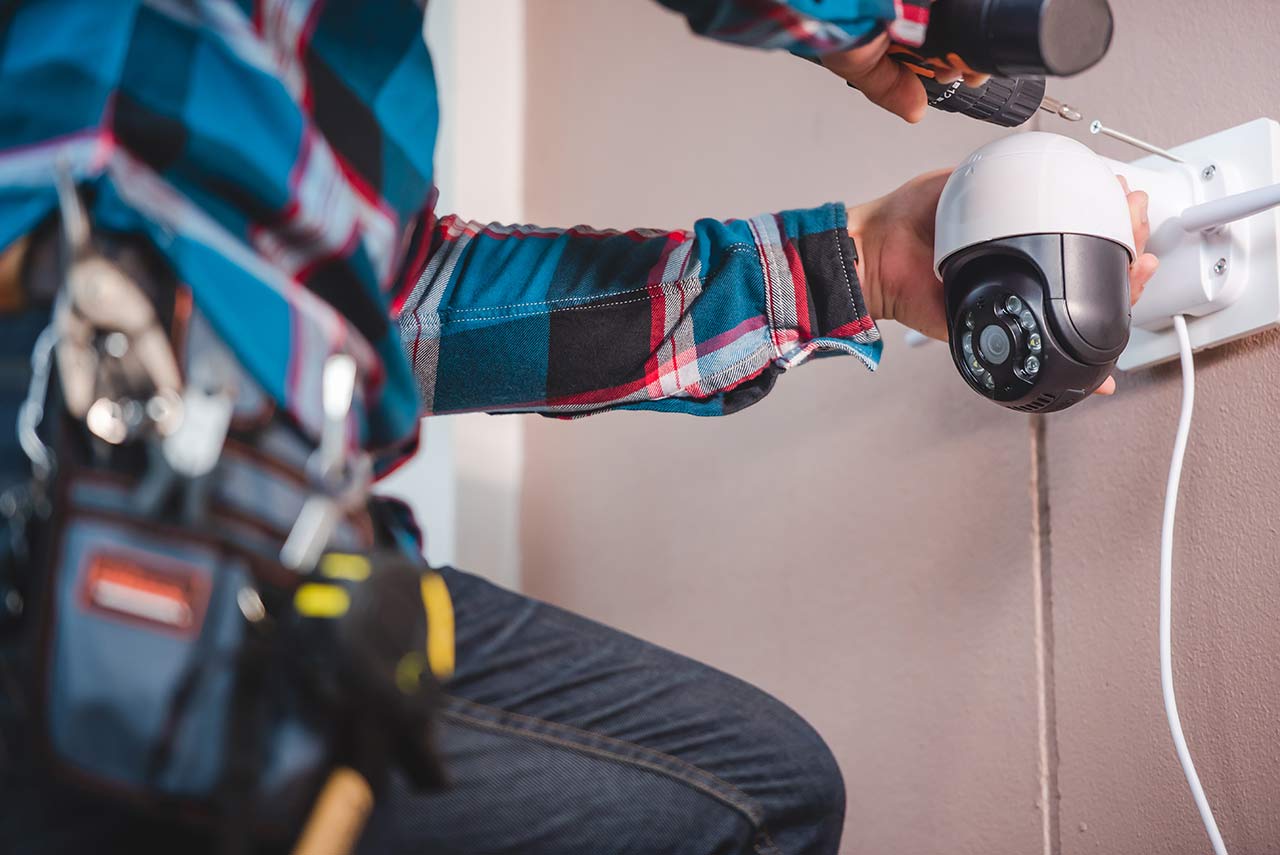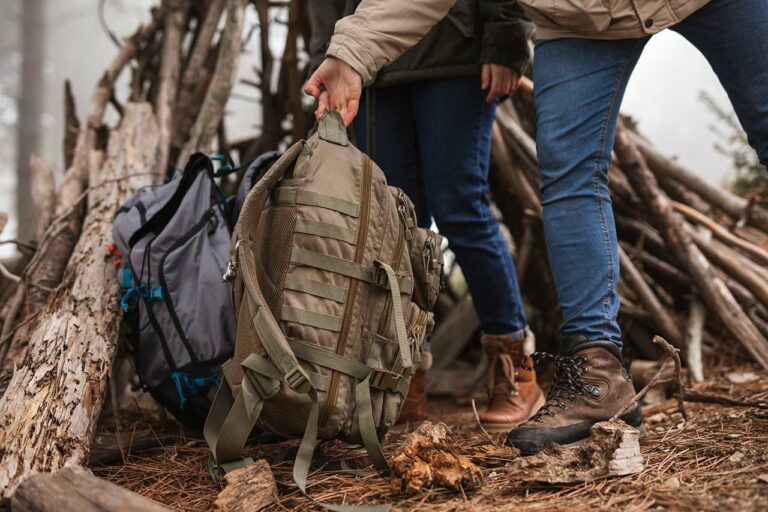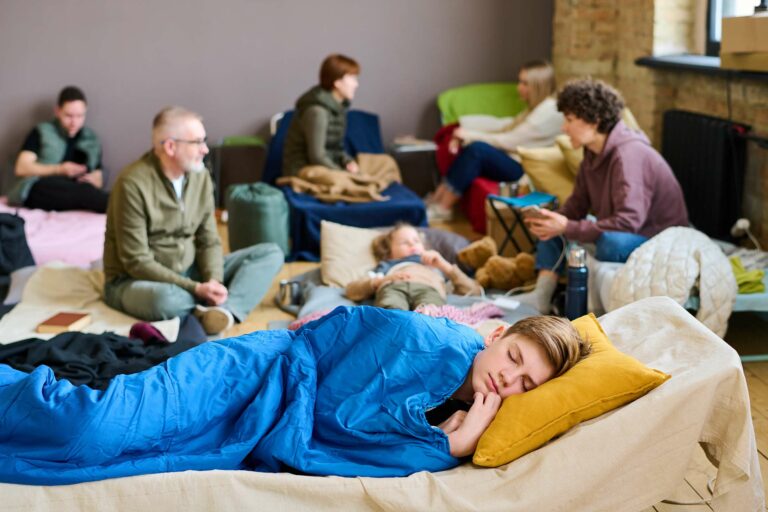How To Fortify Your Home (Expert Security Tips)
As a homeowner, you want to make sure you feel safe and secure in your space. Your home should be your sanctuary, ensuring the well-being of you and your family. One crucial aspect of maintaining this sense of security is knowing how to fortify your home against potential threats, such as burglaries, home invasions, and even large-scale disasters.
From reinforcing doors and windows to properly utilizing your landscaping, there are many ways to fortify your home and keep your family safe, whatever may come to pass.
Importance of Fortifying Your Home
Fortifying your home is crucial for ensuring the safety of you and your family, especially in a large-scaled disaster. A well-fortified home can help deter potential home invaders, allowing you to feel more secure in your living space. Home fortification reduces the chances of break-ins or intrusions, giving you peace of mind that your property and loved ones are well-protected.
Assessing Your Home’s Vulnerabilities
Before you begin fortifying your home, it’s essential to assess its vulnerabilities. Here’s how to evaluate potential weak points and entryways:
Fencing
If you have a fence, it’s your first line of defense against potential invaders, so it’s crucial that it’s in good condition and fence enough to stand up to the task. Assess its general condition and height to make sure it’s effective.
Landscaping
Shrubs and trees have long been popular covers for potential burglars, and can create dangers in a survival scenario. That doesn’t mean you shouldn’t plant anything close to your house. Instead of the usual ornamentals, consider thorny bushes or other natural barriers. They can be both attractive, and serve as a deterrent.
Usual Entries
Examine your home’s exterior doors and windows. Make sure doors and windows are not only strong, but are equipped with quality locks and reinforced frames.
Blind Spots
Check your home for blind spots where intruders could hide. Add motion-activated lights or security cameras to cover these areas that are harder to see.
Doors and Windows Security
Reinforcing Doors
When it comes to your home’s security, having strong, solid doors is crucial. Opt for solid wood doors or steel doors, as they provide better protection against forced entry. To reinforce your doors further, consider upgrading the deadbolts and strike plates. Using longer screws in the doorframe and strike plate can significantly improve the door’s resistance to being kicked in.
Deadbolts
Outfit your door with a high-quality deadbolt with a hardened steel bolt, ensuring that it extends at least one inch into the doorframe. This will help to keep the door locked and secure, even if a burglar attempts to gain entry.
Strike Plates
Strengthen your door’s weak points by installing a heavy-duty strike plate (the metal piece that receives the deadbolt when locked). This will reinforce the doorframe and help prevent forced entry.
Door Reinforcement Kits
These kits contain various plates, screws, and other hardware designed specifically to reinforce your doors and make break-ins more difficult for intruders.
Securing Window Access
Windows are another common point of entry for intruders, so it’s important to take steps to secure them as well. Here are some items to help protect your windows:
Security Window Film
This film, applied directly to the glass, makes it more difficult for burglars to break through. It also helps hold the glass together in the event of a break-in attempt, reducing the risk of injury from shattered glass.
Burglar Bars
These are metal bars installed on the inside of your window frame, making it more difficult for intruders to gain access to your home through the windows. Ensure they have a quick-release mechanism for emergency situations.
Security Screens
These screens are made from heavy-duty materials and can be installed over your existing window screens. They provide a barrier to prevent forced entry while still allowing airflow and visibility.
Window Locks
Additional locks on your windows make them more difficult to pry open.
Building Perimeter Defense
Designing Defensive Landscaping
While it might be mostly known for adding beauty and value to your property, when it comes to fortifying your home, don’t underestimate the power of landscaping. Strategically placed trees, shrubs, and thorny plants can make your property more difficult for intruders to navigate.
- Planting thorny bushes like hawthorn, blackberry, or barberry beneath windows can deter would-be invaders from attempting forced entry.
- Using trees and shrubs can obstruct the line of sight for intruders and provide privacy to your property.
- More thorny plants like pyracantha or rose bushes near your fences create a natural, prickly barrier.
Properly maintained landscaping not only adds appeal, but can significantly improve your home’s defense.
Using Physical Barriers
Another essential aspect of building a strong perimeter defense is installing physical barriers, such as fences and barricades. Your choice of fencing should be based on the level of security you’re aiming for and your budget. Some popular options include:
- Chain-link fences: Affordable and easy to install, but not very effective for keeping intruders out.
- Wooden fences: Provide privacy and deter casual trespassers, but can be scaled or cut through.
- Metal fences: Durable and more difficult to breach, but may lack privacy.
- Barbed wire fence: Highly effective at deterring intruders, but not visually appealing and may not be allowed in some residential areas.
- Brick or stone fences: Stronger than wood, and more private than metal, but can still be knocked through.
Whichever type of fence you choose, remember to keep it properly maintained and secure. Adding security enhancements like fence toppers or anti-climb spikes can make it more difficult for intruders to scale.
Security Systems and Devices
Choosing the Right Alarm System
When it comes to fortifying your home, the right alarm system is a good place to start. There are various systems available in the market, so you’ll have a lot of options in choosing one that meets your needs and budget.
Types of Alarm System
Alarm systems come in two main types: wired and wireless. Wired systems are more reliable, while wireless systems offer easier installation and greater flexibility.
Alarm System Monitoring
Some alarm systems come with professional monitoring services, ensuring a 24/7 response to any triggered alarms. Others are self-monitored, meaning you’ll be notified via your smartphone if an alarm goes off.
Integration
The ideal alarm system can integrate with other smart devices you have in your home for a seamless security experience.
Ease of Installation
As a survivalist, you probably want to know how your alarm system installs and works, so you can take care of any issues yourself. The easier it is to install and operate, the easier this is to do.
Installing Surveillance Cameras
Adding security cameras to your home can significantly improve its overall security. Here are some tips for selecting and installing the right cameras for your home:
Camera Type
Choose between wired, wireless, and wire-free cameras. Wired cameras provide a more stable connection but require running cables, while wireless and wire-free cameras are easier to install but may suffer from signal interference.
Location
Install cameras in high-traffic areas such as entrances, exits, and windows. Consider placing cameras that cover other vulnerable areas like your garage and backyard.
Resolution and Field of View
Opt for high-resolution cameras with a wide field of view to capture more details and cover larger areas.
Night Vision
Make sure your cameras have infrared or night vision capabilities to monitor your home in low-light conditions.
Storage
Check if the cameras offer local and cloud storage options to store recorded footage. Otherwise, you’ll need the means of capturing and storing footage yourself.
Creating a Safe Room or Panic Room
A safe room is a designated area in your house designed to protect you and your family from emergencies. It can range from a simple room with a sturdy door to a purpose-built bunker complete with air filtration and communication systems.
The type of safe room that will best for your really depends on its intended use. If you only want your safe room for use in panic situations, such as a home invasion, a difficult-to-access room may be enough. If you want your safe room to serve you in a long-term disaster, you’ll need a bunker.
Creating a Safe Room
- Choose an ideal location for your safe room. Pick an interior room with no windows to reduce entry points and make it less visible. If the only available room has windows, upgrade them to forced entry resistant or bullet-resistant windows.
- Fortify the room’s entry points. Start by reinforcing the door with a solid wood or steel door. This will drastically increase the level of protection compared to your average residential door. Add deadbolt locks and hinge screws for added security. If you want extra fortification, consider installing a sturdy barricade system.
- Look for ways to reinforce the walls, floor, and ceiling of your safe room. This can include adding layers of plywood, steel, or concrete to create a more robust structure. (If you are building a bunker, make sure it is constructed using strong materials and engineered to withstand extreme forces.)
You’ll also want to ensure your safe room has essential supplies and equipment for emergencies. Stock up on items such as:
- Food and water (non-perishables, at least three days’ worth)
- First-aid kit
- Flashlights and batteries
- Portable radio for updates
- Blankets and clothing
- Tools like a multitool and a whistle
Communications gear is a useful addition to any safe room. A landline phone or radio can help you stay connected and informed during an emergency. Don’t forget to include a charger for your mobile devices.
Once you have your safe room, practice drills with your family to ensure everyone knows how to access and use the safe room. Establish a clear plan for emergencies, so everyone knows their roles and responsibilities.
Implementing Security Measures
Using Proper Lighting
Proper exterior lighting is crucial for home security. It’s essential to have adequately lit areas around your property to deter potential intruders and make it easier for you to spot unwanted visitors. You can use motion-activated lights or strategically placed solar-powered lights to illuminate dark corners and pathways. Consider installing lights that are compatible with night-vision technology, as this can greatly improve visibility during nighttime hours. A well-lit home is less likely to be a target for criminals.
Positioning of Warning Signs
Warning signs play a significant role in discouraging intruders and alerting them to the potential risks they might face if they enter your property. Place signs such as “No trespassing,” “Beware of Dog,” or “Trespassers will be prosecuted” in visible areas around your property’s boundaries. The key is to make sure these signs are easily seen by potential intruders, so they’ll be more likely to move on to an easier, less-threatening target.
Home Fortification in Crisis Situations
Preparing for Civil Unrest
During times of civil unrest, ensuring the safety of your home and family will become top priorities. Taking steps to fortify your home can deter potential threats and give you peace of mind.
If guarding against civil unrest is your most important intention, a safe room or bunker is probably a good addition for your fortification plan.
Setting Up for SHTF Scenarios
In the event of a “sh*t hits the fan” (SHTF) scenario, your home’s fortification becomes even more crucial. Beyond typical home security measures, you can implement some additional tactics to protect your property.
Guard Dogs
Specially trained dogs can provide an additional layer of protection by alerting you to possible threats and defending the property if needed.
Booby Traps
While not recommended for all situations, booby traps can be an effective deterrent in extreme SHTF scenarios. Traps like tripwires, bear traps, or even improvised noise-makers can alert you of a trespasser. Just be cautious when setting up booby traps to avoid accidentally harming yourself, your family, or innocent bystanders.
Booby traps are an extreme case scenario fortification. It’s never a good idea to have traps on your property on a full-time basis, because it opens you up to liability in the everyday world.
Save them for when the world goes crazy.






